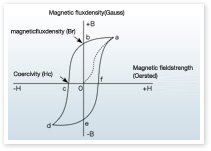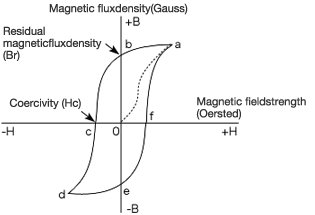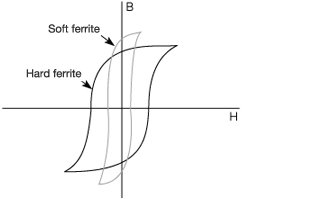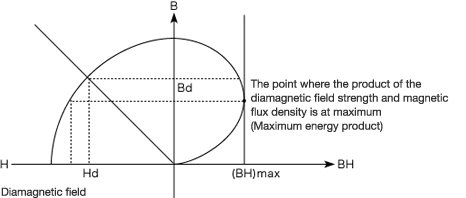
Magnetic Hysteresis Curve

1. Residual Magnetic Flux Density (Br)
When magnetizing a magnet, by increasing the electrical current of the magnetization coil gradually, making the magnetic field stronger, and magnetizing the magnet, the magnetic flux density in the magnet increases accordingly and saturates at a certain point.
Next, decreasing the magnetic field strength by reducing the electrical current from the saturation status, the magnetic flux density does not return to 0 but decreases along with a to b. The magnetic flux density remains at the value of b even if the magnetic field strength becomes 0, and the value is called the residual magnetic flux density (Br).
2. Coercivity or Coercive Force(Hc)

3. Difference between Hysteresis Characteristics of Soft Ferrite and Hard Ferrite

4. Maximum Energy Product (BHmax)
It is one of the four characteristic values of a magnet ― residual magnetic flux density Br, coercivityHc, maximum energy product (BH) max, recoil rate μr―, and a measuring rule of the magnet’s strength. This means the maximum value of the product of the magnetic flux density (Br) and magnetic field strength (H) at a point of the second quadrant (demagnetization curve) of the hysteresis group. The maximum energyproduct increases and the magnet becomes stronger as the residual magnetic flux density and coercivity increase and the hysteresis group is hornier.














